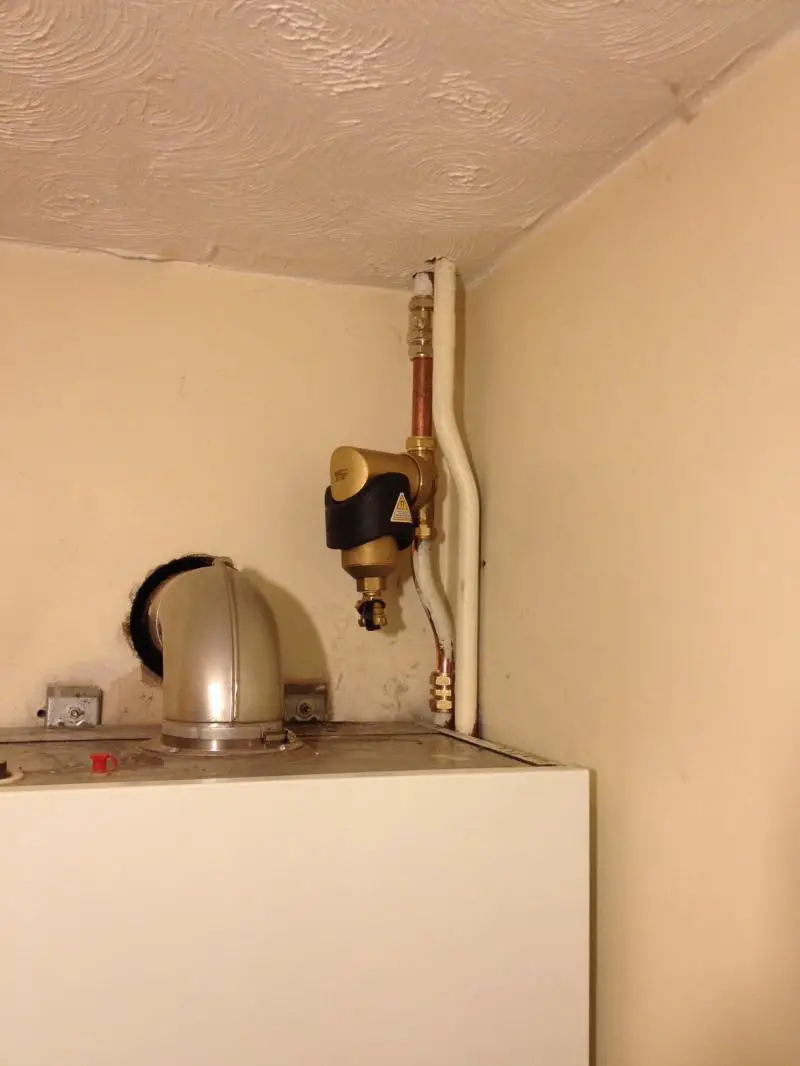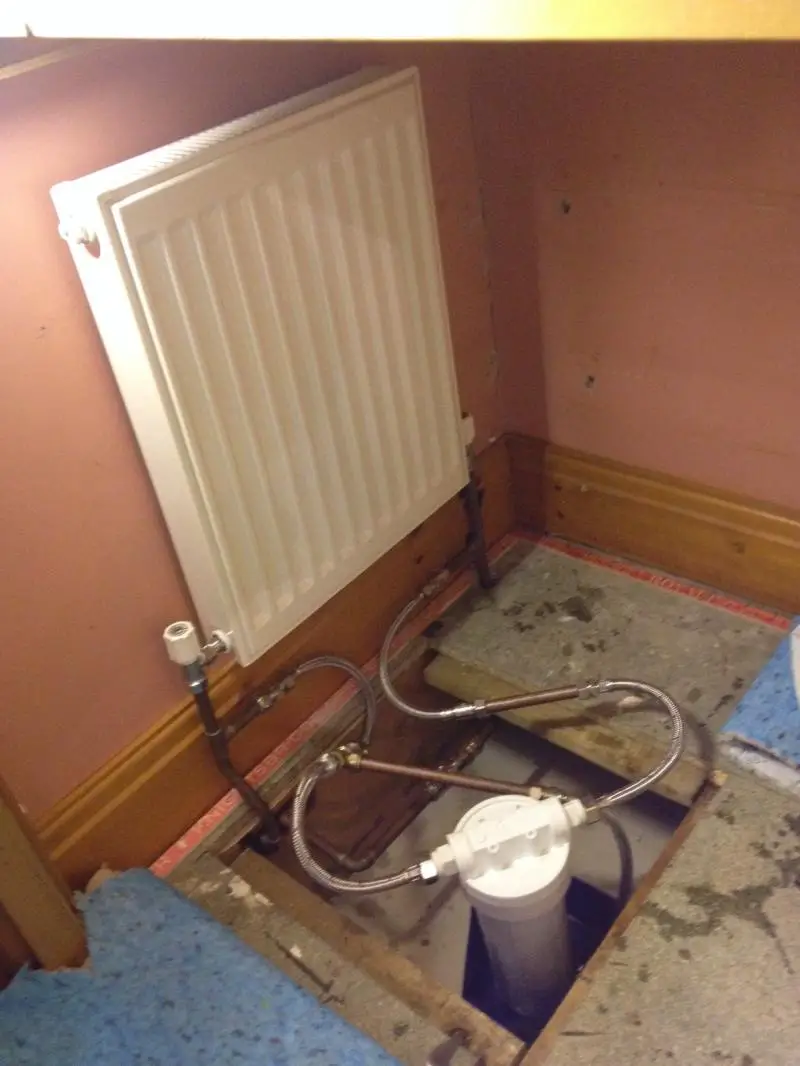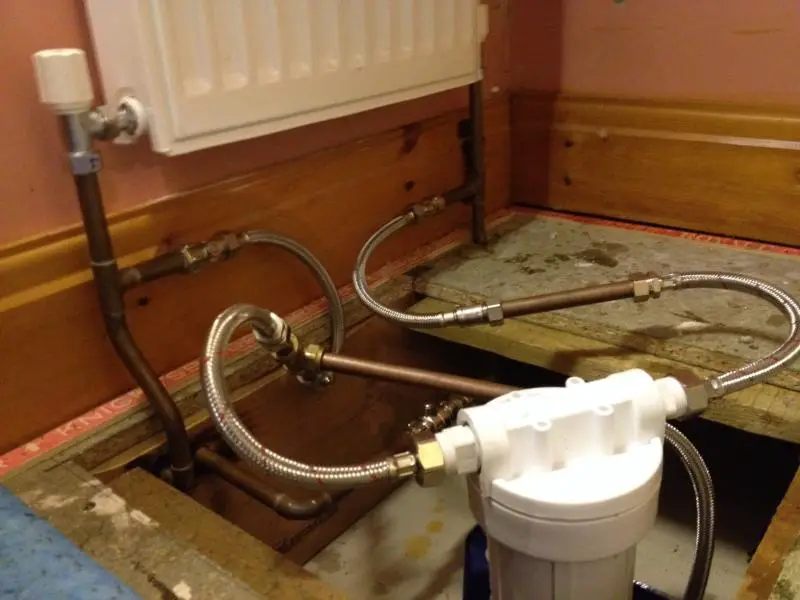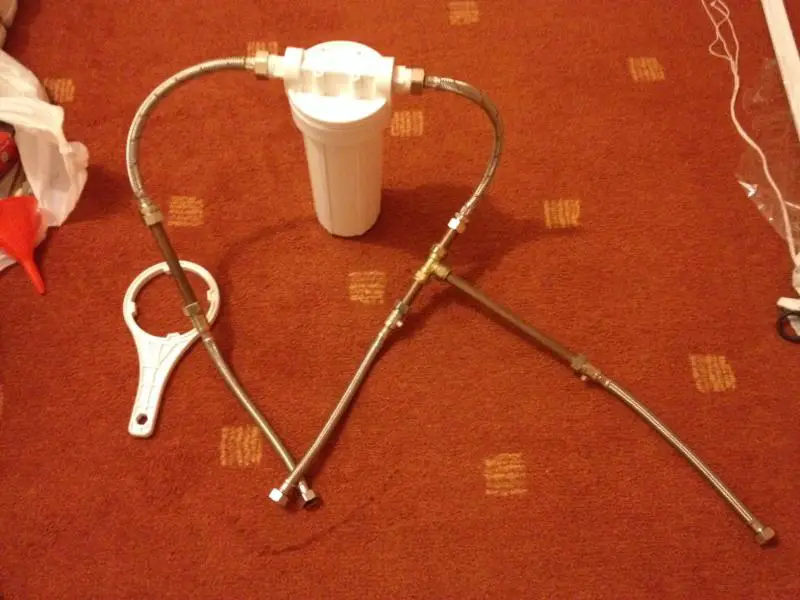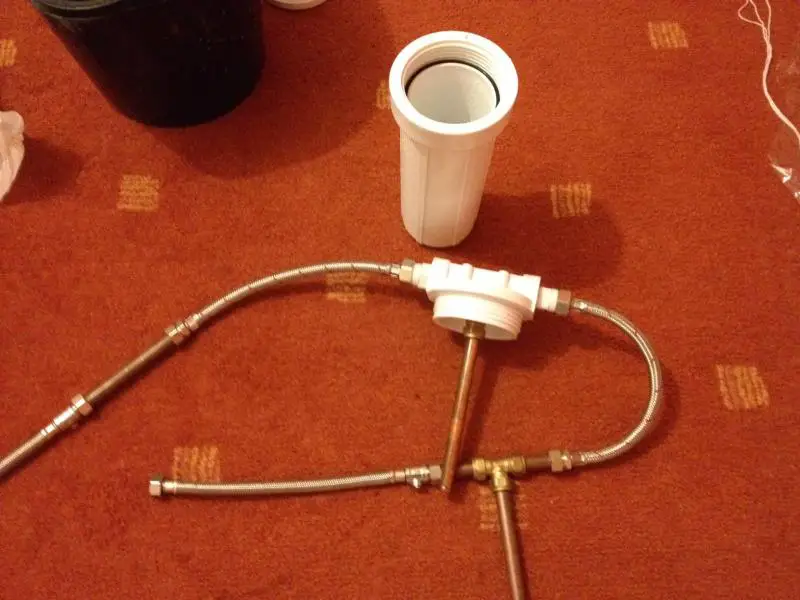Hello all!
Wonder if anyone has any tips on locating and clearing a blockage with minimum disruption.
It's a sealed heating system with about 20 rads. They all work really well - balancing can be a bit tricky but not impossible... Apart from one radiator that will not heat up!
I've tried a few things - and have come to the conclusion that I have a blockage of some sort in my supply pipe to our largest and most important radiator.
So far - I have:
1. turned nearly all other radiators off (using lockshields) and forced majority of flow through the one rad
2. removed/flushed the rad - you wouldn't want to eat your dinner off the inside, but but water can flow through quickly - so no flow problems from the rad.
3. I have replaced the lockshield and TRV
I also tried pressurising the system up to 3.5 bar and testing the flow/return pipes whilst the pipes were off - the return pipe gushed like a 3.5 bar mofo but the feed pipe barely trickled... hence my conclusion!
Accessing the pipe runs is quite difficult - however, by deduction, this part of the heating is most likely a 15mm straight T off my 22mm main supply pipes.
The T's are under laminate flooring, under a bath and boxed in plumbing... which are nailed in place with 6" ring-shank nails (by the a**e living there before us who decided at no point will anyone need to maintain anything)
The 15mm pipe work runs under said laminate, under a non-load bearing stud-wall, and then for a 9m run [under new fitted carpet ] - and 22mm T&G chipboard - nailed with 5" ring-shank nails.
] - and 22mm T&G chipboard - nailed with 5" ring-shank nails.
This is on the 1st floor - so all said pipework is in joists between bedroom/bathroom floor and plasterboard ceiling.
The pipes cut across the joists so I would have to cut an entire 9m+ section of flooring up if I needed to access the whole pipe - however, I suspect there is little point in exposing all the pipework.
I guess I could just cut a square of plasterboard out - but other than knowing the blockage is somewhere between the T and the valve - how can I get a better idea of where to cut?
Finally, I don't want to powerflush or use any really strong chemicals - there is not enough water getting through the blockage for it to really bite and the side affects of the harsh chemical cleanser on the older part of the system would probably leave me in an even worse situation!!
Any tips/advice/suggestions?
I'm quite a competent DIYer - drained it, removed and flushed rads, installed new rads, extended the system multiple times - so happy to try most things - but this one has just beat me! (FWIW - This rad has never worked, but I had assumed it would be a sticking TRV because the flow pipe always got hot but the return didn't) - it's not my DIY that's broken it!
Ta
Whitling2k
Wonder if anyone has any tips on locating and clearing a blockage with minimum disruption.
It's a sealed heating system with about 20 rads. They all work really well - balancing can be a bit tricky but not impossible... Apart from one radiator that will not heat up!
I've tried a few things - and have come to the conclusion that I have a blockage of some sort in my supply pipe to our largest and most important radiator.
So far - I have:
1. turned nearly all other radiators off (using lockshields) and forced majority of flow through the one rad
2. removed/flushed the rad - you wouldn't want to eat your dinner off the inside, but but water can flow through quickly - so no flow problems from the rad.
3. I have replaced the lockshield and TRV
I also tried pressurising the system up to 3.5 bar and testing the flow/return pipes whilst the pipes were off - the return pipe gushed like a 3.5 bar mofo but the feed pipe barely trickled... hence my conclusion!
Accessing the pipe runs is quite difficult - however, by deduction, this part of the heating is most likely a 15mm straight T off my 22mm main supply pipes.
The T's are under laminate flooring, under a bath and boxed in plumbing... which are nailed in place with 6" ring-shank nails (by the a**e living there before us who decided at no point will anyone need to maintain anything)
The 15mm pipe work runs under said laminate, under a non-load bearing stud-wall, and then for a 9m run [under new fitted carpet
This is on the 1st floor - so all said pipework is in joists between bedroom/bathroom floor and plasterboard ceiling.
The pipes cut across the joists so I would have to cut an entire 9m+ section of flooring up if I needed to access the whole pipe - however, I suspect there is little point in exposing all the pipework.
I guess I could just cut a square of plasterboard out - but other than knowing the blockage is somewhere between the T and the valve - how can I get a better idea of where to cut?
Finally, I don't want to powerflush or use any really strong chemicals - there is not enough water getting through the blockage for it to really bite and the side affects of the harsh chemical cleanser on the older part of the system would probably leave me in an even worse situation!!
Any tips/advice/suggestions?
I'm quite a competent DIYer - drained it, removed and flushed rads, installed new rads, extended the system multiple times - so happy to try most things - but this one has just beat me! (FWIW - This rad has never worked, but I had assumed it would be a sticking TRV because the flow pipe always got hot but the return didn't) - it's not my DIY that's broken it!
Ta
Whitling2k


